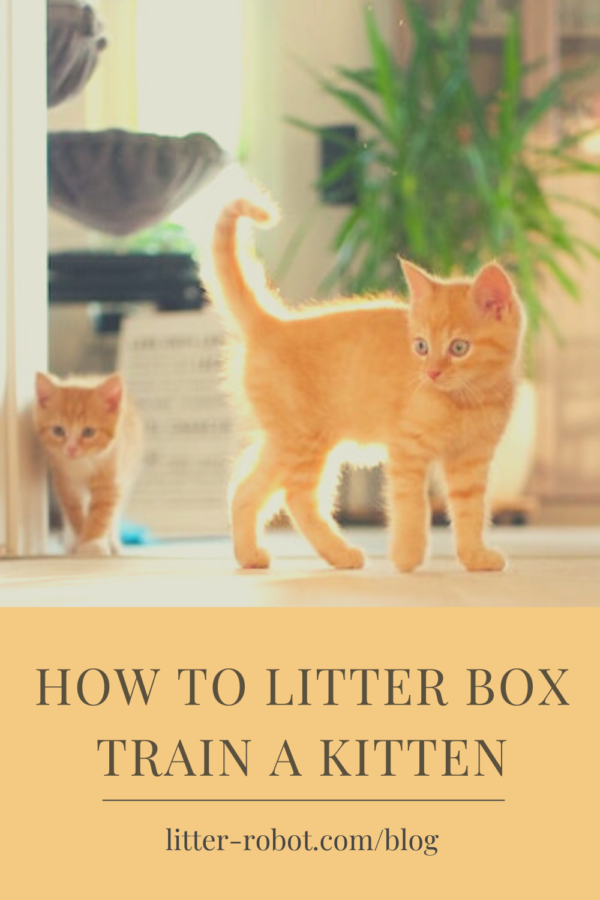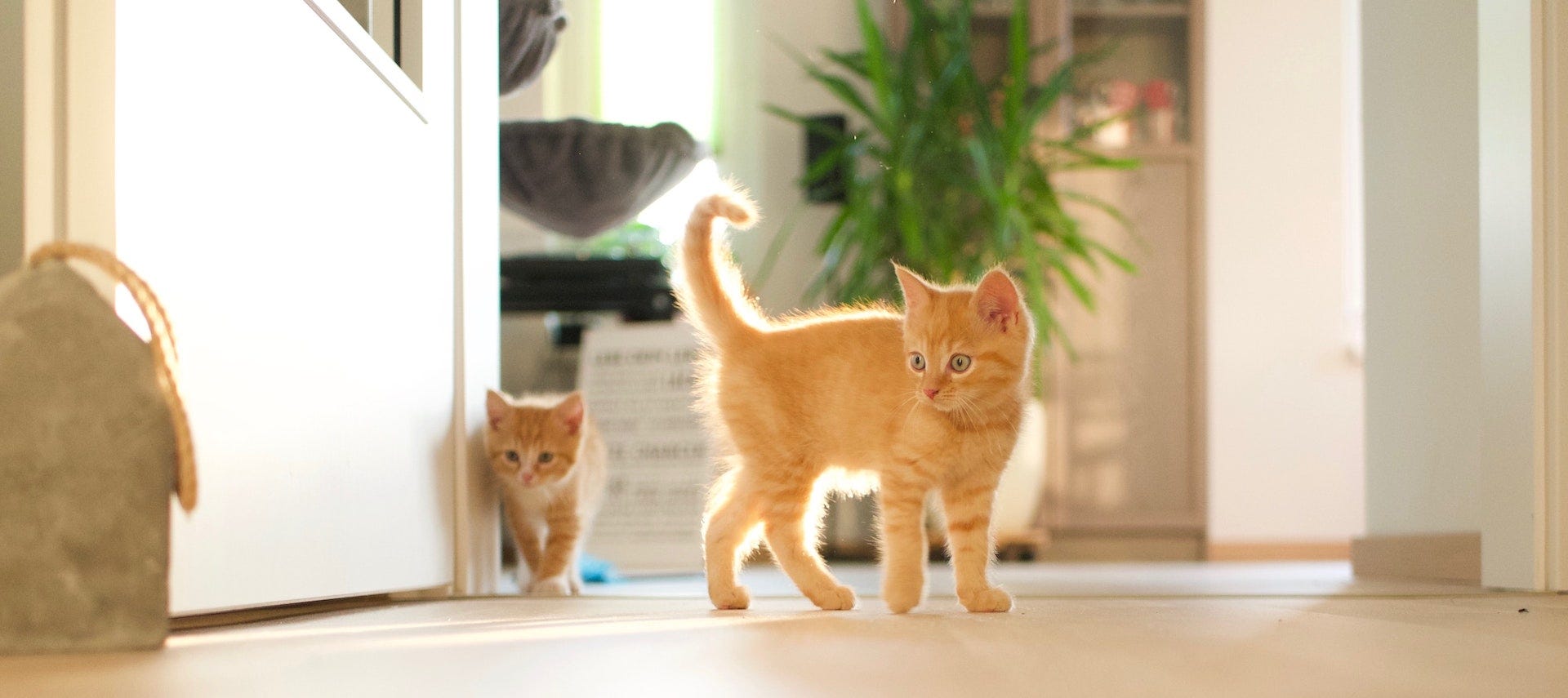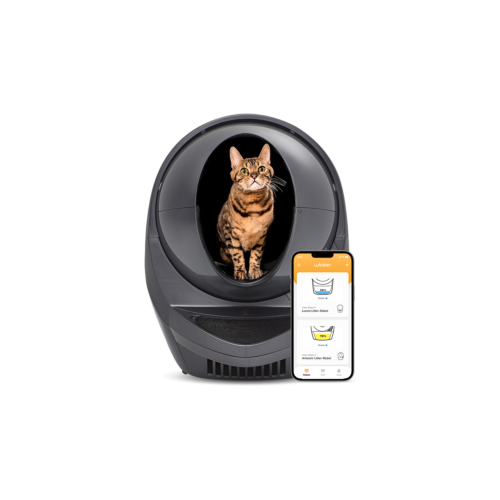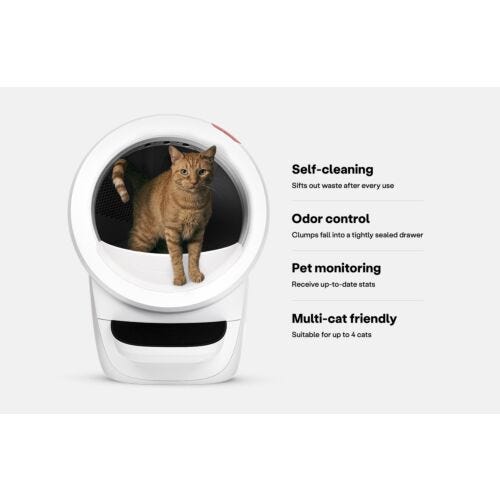Adopting a new kitten may be one of the most delightful experiences a person can have—the sweet cuddles, the awkward playfulness, the spontaneous naps, the doe-eyed stares, their curiosity and wonder, and, oh, the joys of litter box training! What’s that? You’re not equally enamored with the idea of teaching your kitten to use the litter box?
Teaching your kitten to use the litter box isn’t very difficult—but it is essential. Learn how to litter box train a kitten in the steps below!
What is litter box training?
Proper litter box use is one of—if not the—most important things you can teach your kitten. Elimination problems (going outside the litter box) is a top-cited reason for giving up a cat. You can mitigate future problems by starting things off right.
Litter box training your kitten early on will help you avoid dealing with the mess of your kitten having accidents around the house. Not only are accidents outside of the litter box frustrating for you, they’re stressful for your kitten and other animals in the house. Plus, your overall household hygiene will suffer!
Wondering when to start litter box training kittens? At 4-5 weeks of age, most kittens are ready and capable of using the litter box. In some cases, kittens even younger can learn.
How does litter box training work?
The good news? Cats, kittens included, almost always instinctively know how to use the litter box. That’s because a cat’s biological drive urges them to bury their waste. This instinct can be attributed to their wildcat ancestors, who avoided detection by predators by masking their scent and tracks.
The smarter cats gravitated toward soft dirt or sand, since this granular consistency made it easier to bury their waste. This is why cats are naturally attracted to the feel of cat litter and know what to do once they feel it beneath their paws.
Instinct reinforced by observation means that kittens are sometimes litter box trained mere weeks after birth. This happens when they observe their mothers burying their waste—whether that occurs indoors in a traditional litter box, or outside in a patch of sand.
That said, some kittens still need a little encouragement when it comes to litter box training.
How to litter box train a kitten in 5 steps
Litter box training kittens can be a little messy and requires some patience. Just remember that long-term, the positive associations you create by praising desirable behavior is more likely to result in success than negative associations created by punishing your kitten. Be patient, consistent, and gentle, and your kitten is much more likely to be successful.
Step 1: Reduce the (potential) disaster area
When you first bring your kitten home, limit the area where your cat can roam. Not only will this reduce the number of places where your cat might have an accident, it will also make your kitten’s new environment feel more manageable (in terms of territory).
Inside the small area, you should have food, water, a comfortable place for your kitten to sleep, toys, and a clean litter box. Keep the area even tidier with the litter-catching, urine-resistant Litter Trap™ Mat!
Step 2: Place your kitten in the litter box (and repeat)
Start by placing your kitten in the litter box, especially each time the kitten wakes and after meals. Simply set your kitten in his or her litter box and, in many cases, this will teach your young one where to use the bathroom. When they successfully use the litter box, lavish praise on your kitten to create a positive association with correct use of the litter box.
Step 3: Keep the litter box clean and remove other temptations
Cats don’t like to use dirty litter boxes, especially if they’ve been soiled by other cats in the household. A kitten undergoing litter box training should have a consistently clean litter box, as well. Make sure to scoop the litter box daily, and provide your cats with one more litter box than there are cats in the house.
You’ll also want to remove other tempting places to “go” while your kitten is litter box training. Large indoor houseplants—particularly ones on the floor—might be deemed an appropriate place to do their business. Either move the plants outdoors or to a room your kitten can’t access.
Step 4: Be careful with kittens and cat litter
Some kittens will eat small amounts of cat litter at first. While litter box training, you may want to supervise your kitten each time he or she has access to or uses the litter box. If you cannot supervise your kitten, you may want to avoid using clumping litter as it can cause intestinal blockages if eaten.
There are various reasons why kittens eat litter, including curiosity. But if the behavior persists, visit the vet to get it checked out. If you suspect your kitten has eaten litter, it’s best to head to the vet right away.
Step 5: Remember, accidents are bound to happen
Litter box training kittens means accidents are bound to happen. The best way to handle them is calmly. Rubbing kittens’ noses in a mess and yelling at them is neither productive nor kind. When your kitten makes a solid mess, simply use a paper towel, pick it up, and place both the kitten and the mess in the litter box. Use a pet-safe cleaner spray or cleaner wipes to eliminate stains and odors.
Once kittens associate litter boxes with going to the bathroom, you’re on your way. Avoid making elimination traumatic for your kitten, and you’ll be on a path to successful kitten litter box training.
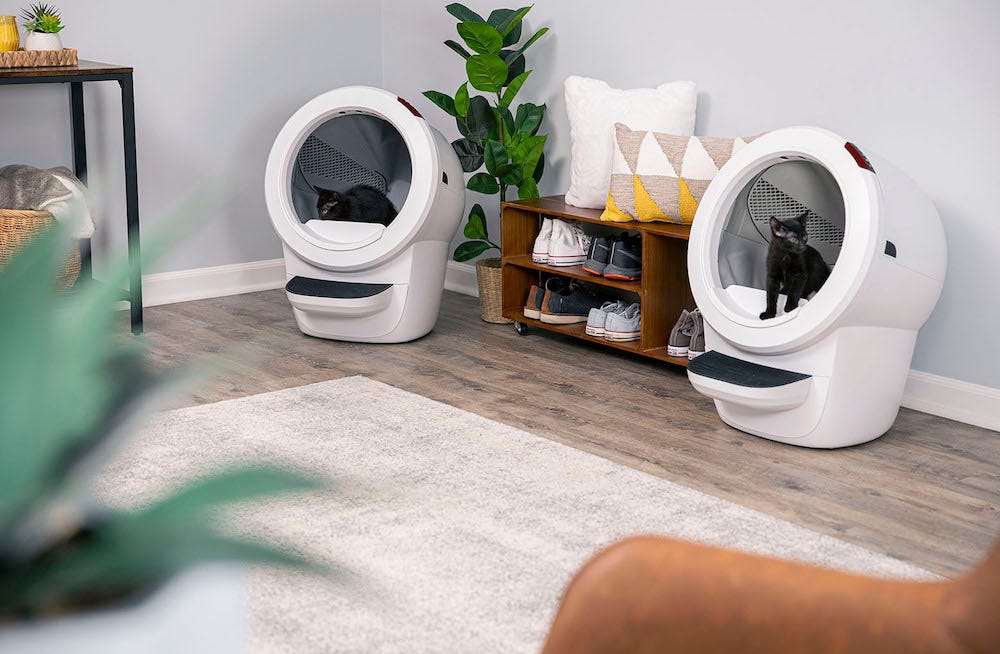
Litter box “retraining”: How to help your cat acclimate to Litter-Robot
Because an important part of litter box training (and owning a cat in general) is keeping the litter box clean, it can sometimes be frustrating for cat parents to have to scoop every day. If you hate scooping the litter box, you may be considering a self-cleaning litter box like Litter-Robot 4.
Young kittens can be litter box trained using Litter-Robot, as long as Litter-Robot is not in automatic mode. Kittens that weigh 3 pounds or more can safely use Litter-Robot 4 in automatic mode, while kittens that weigh 5 pounds or more can use Litter-Robot 3 Connect in automatic mode. If your kitten does not meet this minimum weight, leave Litter-Robot off to operate in “semi-automatic” mode. When you see your kitten has used Litter-Robot, turn it on, and Litter-Robot will automatically perform a clean cycle. Once it finishes, turn the power off. This way, your kitten is safe while they get accustomed to Litter-Robot at a young age, and you don’t have to scoop the litter box!
(Also note: It’s best to use clumping cat litter with Litter-Robot, so be cautious of that around your new kitten.)
6 steps to help your cat transition to Litter-Robot
Adult cats may need a little “retraining” when it comes to acclimating to Litter-Robot. Most cats make the transition from traditional litter box to self-cleaning litter box just fine! However, you’ll want to follow the tips below to make this transition as smooth as possible:
- Place Litter-Robot in the same location as the current litter box, set it up (make sure you add litter to the globe), and make sure it is turned off. Give your cats a day or two to explore Litter-Robot.
- Add a scoop of litter from the old litter box to Litter-Robot to provide a familiar scent for your cat.
- Place treats on the step or around Litter-Robot so your cat associates rewards with the unit.
- Once you notice that your cats have used Litter-Robot, power the unit on to cycle. Encourage your cats to be present, so they can observe the motion and become familiar with the sound of Litter-Robot while you are there to reassure them. Turn the unit off again once the cycle is complete.
- We recommend that you no longer clean the old litter box once your cats have used Litter-Robot.
- If your cats are not using Litter-Robot within a few days, continue using the old brand of litter in the old litter box, and let it go as long as possible without cleaning it. (But be sure to closely monitor your cat’s litter box activities.) Cats prefer a clean litter box and a dirty litter box might persuade them to use the clean Litter-Robot.
Let the fun begin
Now that you know how to litter box train a kitten, you can focus more on the fun aspects of adopting a cat! Litter box training is relatively easy, as long as you have a little patience and follow the steps above.
If your kitten is 4-5 weeks of age or older, you can place them in a litter box to help them become familiar with the location and feel of the litter beneath their paws. Most kittens will instinctively know how to use a litter box.
Kittens under one month of age usually cannot poop on their own. If orphaned, kittens will need to be stimulated with a soft tissue or baby wipe before every meal. This will signal to the kitten’s body to have a bowel movement.
If your cat pees outside of the litter box, it’s best to use an enzyme-based cleaner on the soiled area to deter your cat from peeing there again. Pet-friendly, plant-based cleaners like our cleaner spray will digest and eliminate organic material, stains, and odors.
Cover photo by Jonathan Wiemers on Unsplash
